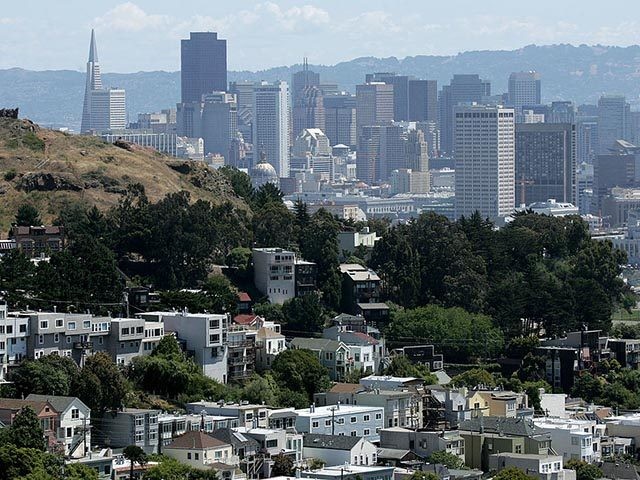Residents of neighborhoods in California’s Bay Area had some say about development projects until a new law took effect that allows developers to, in some cases, bypass local planning and zoning regulations if they make some units in the multi-family buildings “affordable,” or low-rent for low-income residents.
The developers can also use the “state density bonus,” which allows them to put even more units in a building.
The San Francisco Chronicle reported on the forced economic diversity being forced on neighborhoods chosen by homeowners for amenities and safety:
Over the past decade, Potrero Hill and Dogpatch residents have become unusually adept at negotiating with developers, hammering out deals on thousands of new housing units in dozens of projects set to more than double the population in the two east side San Francisco neighborhoods.
So early last year when DM Development CEO Mark MacDonald approached residents about building a seven-story tower at 300 DeHaro St., it didn’t seem like anything out of the ordinary. Residents said they would support a slightly shorter six-story project — a building consistent with zoning — and asked for more retail and tweaks to the exterior design.
“We told him we could get behind a code-compliant project,” J.R. Eppler, who belongs to the Potrero Boosters Neighborhood Association, said in the Chronicle report. “That said, there is always room for negotiations.”
But DM Development abandoned dealing with the neighbors, taking advantage of Senate Bill 35. They are increasing the proposed 80-foot building to 120 feet and increasing the original 290 units to 450 units.
MacDonald said the decision was made after “it was abundantly clear to us the neighbors were not supportive of the lower scale project.”
The Chronicle reported:
DM Development is proposing 450 “group housing” units of between 280 and 300 square feet, of which 181 will be below market rate. Forty of these will be affordable to individuals earning less than $47,000 a year, 127 will target people making less than $75,000 a year, and 14 will be for those with incomes of less than $103,000. In addition, DM will pay $3.8 million in affordable housing fees.
San Francisco Planning Director Rich Hillis said that this project is a harbinger of what’s to come,” the Chronicle reported. And “developers will likely increasingly use state law to circumvent local codes.”
“Because San Francisco is currently exceeding its market rate goals, but lagging on its affordable goals, it can only be used on projects with significant affordable units,” the Chronicle reported. “That will likely change as the city scrambles to meet its next RHNA goals: 82,000 units between 2023 and 2030, Hillis said.”
The current building is single story and includes restaurants. The new space will have lounges and communal kitchens.
As for the residents living there now, Alison Heath said she and others do not like the power grab.
“What has gone terribly wrong with 300 DeHaro has been the lack of response to community input,” Heath said. “I have yet to meet a neighbor who thinks this is a good idea. The language I’m hearing is ‘monstrosity.’ ”
Follow Penny Starr on Twitter or send news tips to pstarr@breitbart.com.

COMMENTS
Please let us know if you're having issues with commenting.